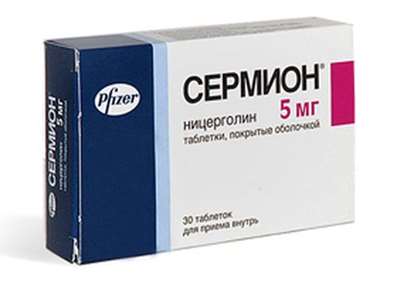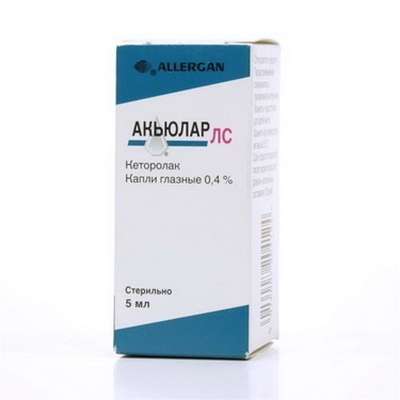Instruction for use: Suxamethonium iodide (Suxamethonii iodidum)
I want this, give me price
chemical name
2,2 '- [(1,4-Dioxo-1,4-butanediol) bis (oxy)] bis [N, N, N-trimethylethanamine iodide
Pharmacological group
n Cholinolytics (muscle relaxants)
The nosological classification (ICD-10)
A35 Other forms of tetanus
Tetanus local, Tetanus, Muscle spasms in tetanus, Clostridiosis wound, Hydrophobia (hydrophobia)
R56.8 Other and unspecified convulsions
Vesta Syndrome, Night cramps of the muscles of the lower extremities
T14.2 Fracture in unspecified area of body
Internal fixation of bone fracture, Acute period after fractures of bones, Edema after interventions for fractures, Fracture, Fractures of bones, Reposition of bone fragments in fractures, Traumatic bone injuries, Traumatic bone injury,Injuries of the osteoarticular system, Injuries to bone tissue
T14.3 Dislocation, sprain and damage to the capsular-ligamentous apparatus of the joint of the unspecified area of the body
Painful stretching of muscles, Pain and inflammation in tension, Dislocation of dislocation, Degenerative changes in the ligamentous apparatus, Edema due to sprains and bruises, Edema after interventions for sprains, Damage and rupture of ligaments, The musculoskeletal system is damaged, Damage to ligaments, Damage to the joints, Ligament ruptures, Tendon tendons,Ruptures of the tendons of muscles,Stretching, Crick, Stretching of the muscle, Sprain, Tension of the tendons, Extensions,Stretch muscles, Sprains, Tension of the tendons, Injury of the musculoskeletal system, Injuries to the joints, Injuries of capsule-articular tissues, Injuries of the osteoarticular system, Injuries to ligamentsInjuries to the joints, Joint wounds, Stretching of the ligamentous apparatus, Habitual stretching and tearing
T65.1 Toxicity of strychnine and its salts
Strychnine poisoning
Z100 * CLASS XXII Surgical practice
Abdominal surgery, adenomectomy, Amputation, Coronary angioplasty, Angioplasty of the carotid arteries, Antiseptic skin treatment for wounds, Antiseptic Hand, Appendectomy, atherectomy, Balloon coronary angioplasty, Vaginal hysterectomy, The coronary bypass, Interventions in the vagina and cervix, Interventions on the bladder, Intervention in the mouth, Restoration and reconstructive surgery, Hand hygiene of medical personnel, Gynecologic surgery, Gynecological intervention, Gynecological surgery, Hypovolemic shock during operations, Disinfection of purulent wounds, Disinfection of wounds edges, Diagnostic intervention, Diagnostic procedures, Cervical Diathermocoagulation, Long-surgery, Replacing the fistula catheters, Infection in orthopedic surgery, Artificial heart valve, cystectomy, Short-term outpatient surgery, Short-term operation, Short surgical procedures, Krikotireotomiya, Blood loss during surgery, Bleeding during surgery and in the postoperative period, Kuldotsentez, laser photocoagulation, laser coagulation, retinal laser coagulation, Laparoscopy, Laparoscopy in Gynecology, CSF fistula, Small gynecological operations, Small surgical procedures, Mastectomy and subsequent plastic, mediastinotomy, Microsurgical operations on the ear, Mukogingivalnye operation, suturing, Minor surgery, neurosurgical operation, Immobilization of the eyeball in ophthalmic surgery, testectomy, pancreatectomy, Perikardektomiya, The period of rehabilitation after surgery, The period of, convalescence after surgery, Percutaneous transluminal coronary angioplasty, Pleural thoracentesis, Pneumonia postoperative and posttraumatic, Preparation for surgical procedures, Preparation for surgery, Preparation of the surgeon's hands before surgery, Preparation of the colon for surgical procedures, Postoperative aspiration pneumonia in neurosurgical and thoracic surgery, Postoperative nausea, Postoperative bleeding, postoperative granuloma, postoperative shock, The early postoperative period, myocardial revascularization, Radiectomy, gastric Resection, bowel resection, uterine Resection, liver Resection, enterectomy, Resection of part of the stomach, Reocclusion of the operated vessel, Bonding tissues during surgical procedures, Removal of sutures, Condition after eye surgery, Condition after surgery, Condition after surgery in the nasal cavity, Condition after gastrectomy, Status after resection of the small intestine, Condition after tonsillectomy, Condition after removal of the duodenum, Condition after phlebectomy, Vascular surgery, Splenectomy, Sterilization of surgical instruments, Sterilization of surgical instruments, sternotomy, Dental surgery, Dental intervention in periodontal tissues, strumectomy, Tonsillectomy, Thoracic surgery, total gastrectomy, Transdermal intravascular coronary angioplasty, Transurethral resection, Turbinektomiya, Removal of a tooth, cataract surgery, Removal of cysts, tonsillectomy, Removal of fibroids, Removing the mobile primary teeth, Removing polyps, Removing broken tooth, Removal of the uterus body, Removal of sutures, Urethrotomy, Fistula likvoroprovodyaschih ways, Frontoetmoidogaymorotomiya, Surgical infection, Surgical treatment of chronic limb ulcersm, Surgery, The surgery in the anal area, The surgery on the colon, Surgical practice, The surgical procedure, Surgical interventions, Surgery on the gastrointestinal tract, Surgical procedures on the urinary tract, Surgical procedures on the urinary system, Surgical intervention of the genitourinary system, Surgical procedures on the heart, Surgical manipulation, surgery, Surgery on the veins, Surgical intervention, Vascular surgery, Surgical treatment of thrombosis, cholecystectomy, Partial gastric resection, transabdominal hysterectomy, Percutaneous transluminal coronary angioplasty, Percutaneous transluminal angioplasty, Coronary artery bypass, tooth Extirpation, Extirpation of milk teeth, pulpectomy, pulsative cardiopulmonary bypass, tooth Extraction, teeth Extraction, cataract extraction, Electrocoagulation, endourological intervention, episiotomy, Etmoidotomiya, Complications after tooth extraction
Z40 Prophylactic surgical intervention
Inhalation anesthesia, Intratracheal Intubation, Intubation of the trachea, Surface anesthesia in ophthalmology
Code CAS 541-19-5
Characteristics
Miorelaxant of peripheral action (depolarizing). The chemical structure is a doubled molecule of acetylcholine (diacetylcholine).
White or white with a slightly yellowish tint fine crystalline powder odorless. Easily soluble in water, practically insoluble in 95% alcohol and chloroform. The melting point is 250-255 ° C. The pH of a 1% solution is 4.5-6.2.
Pharmacology
Pharmacological action - miorelaksiruyuschee.
Depolarizing short-acting muscle relaxant. Violates the conduct of neuromuscular stimulation and causes relaxation of skeletal muscles. Competing with acetylcholine for n-holinoretseptory, causes a persistent depolarization of the terminal plate due to high affinity for cholinergic receptors and resistance to acetylcholinesterase. At first, the development of depolarization is manifested by fasciculations (generalized disorganized contraction of myofibrils) due to short-term relief of neuromuscular transmission, then the depolarized membranes cease to respond to additional impulses and the myoparalytic effect occurs (spastic paralysis occurs). After iv introduction miorelaxation develops in the following sequence: the muscles of the fingers, eyes, legs, neck, back; Then intercostal muscles and diaphragm. Causes an increase in cerebral blood flow and intracranial pressure in conditions of weak general anesthesia. After the / m introduction, the effect develops in 2-4 minutes, after iv introduction - after 54-60 seconds, the maximum effect develops in 2-3 minutes and remains in full for 3 minutes. Duration of action 5-10 minutes.
The severity of the effect depends on the dose: 0.1 mg / kg - relaxation of the skeletal muscles without a significant effect on the respiratory system, 0.2-1 mg / kg - complete relaxation of the musculature of the abdominal wall and respiratory muscles (significant restriction or complete stop of spontaneous breathing). Has a quick and short-term effect. Does not cumulate. For prolonged muscle relaxation, repeated administration is necessary. The rapid onset of the effect and the subsequent rapid recovery of neuromuscular conduction allow the creation of a controlled and controlled miorelaxation.
After intravenous administration is distributed in plasma and extracellular fluid. More than 90% is hydrolyzed by pseudocholinesterase of blood to succinic acid and choline. T1 / 2 - 90 s at a normal level of pseudocholinesterase. It is excreted by the kidneys. Does not penetrate intact GEB.
Indications
Interventions requiring miorelaxation (usually short-term): disabling of spontaneous breathing (intratracheal intubation, bronchoscopy); Complete miorelaxation (endoscopy, electroencephalography, correction of dislocations, reposition of bone fragments in fractures, gynecological, thoracic, abdominal operations); Prevention of seizures in electropulse therapy, strychnine poisoning, tetanus (symptomatic therapy).
Contraindications
Hypersensitivity, malignant hyperthermia (including in history, family), congenital and dystrophic myotonia, Duchenne muscular dystrophy, angle-closure glaucoma, acute liver failure, pulmonary edema, penetrating eye trauma, bronchial asthma, hyperkalemia, age under 1 year.
Restrictions on the use
Emergency surgery in patients with a "full stomach", myasthenia gravis, terminal stage of hepatic insufficiency, anemia, cachexia, prolonged fasting, chronic infections, widespread burns, trauma, postpartum period, tetanus, tuberculosis, malignant neoplasms, chronic renal failure, myxedema, collagen diseases , Conditions after a plasma transfusion, plasmapheresis, artificial circulation, acute or chronic intoxication with insecticides - cholinesterase inhibitors (if ingested) or with anticholinesterase drugs (neostigmine, physostigmine, distigmine, phospholin), concurrent administration of drugs that compete with suxamethonium for cholinesterase (eg procaine in /at). In children older than 1 year is not recommended for unscheduled operations.
pregnancy and lactation
With caution in pregnancy (passes through the placental barrier).
Side effects
From the cardiovascular system: lowering blood pressure, arrhythmia, bradycardia (more often in children, with repeated administration - in children and adults), conduction disorders, cardiogenic shock.
Allergic reactions: anaphylactic shock, bronchospasm.
Other: hyperkalaemia, increased intraocular pressure, changes in secretion of salivary glands, fever, myalgia (10-12 hours after administration), prolonged paralysis of the respiratory muscles (associated with a genetically determined violation of serum cholinesterase formation); Rarely - rhabdomyolysis with the development of myoglobinemia and myoglobinuria.
Interaction
Enhances the effects of cardiac glycosides. Reduces the effectiveness of antimiasthenic drugs. Incompatible with donor blood (hydrolysis of the drug), blood preservatives, whey preservatives, with blood products, with solutions of barbiturates (a precipitate is formed) and alkaline solutions. Compatible with 0.9% solution of sodium chloride, Ringer's solution, 5% solution of fructose and 6% solution of dextran.
Strengthen and prolong the muscle relaxant effect: anticholinesterase drugs and drugs that have the potential to reduce the activity of cholinesterase (aprotinin, diphenhydramine, promethazine, estrogens, oxytocin, high-dose glucocorticosteroids, oral contraceptives), procaine, procainamide, lidocaine, verapamil, beta-blockers, Aminoglycosides, amphotericin B, clindamycin, cyclopropane, propanidide, organophosphate insecticides, magnesium and lithium salts, quinidine, quinine, chloroquine, pancuronium bromide. Compatible with other muscle relaxants, narcotic analgesics. Halogen containing drugs for general anesthesia are enhanced, and sodium thiopental and atropine reduce the undesirable effect on the cardiovascular system.
Overdose
Symptoms: prolonged respiratory depression, stopping breathing.
Treatment: IVL; With a decrease in the content of cholinesterase in the blood serum - transfusion of fresh blood (high activity of cholinesterase plasma), correction of electrolyte disturbances.
Routes of administration
In / in.
Precautions
With caution apply for diseases of the cardiovascular system, respiratory diseases, neuromuscular diseases, increased intraocular pressure.
Possible use in patients with myasthenia gravis. It should be remembered that patients with myasthenia gravis (they have a reduced number of functioning n-holinoretseptorov) are relatively resistant to the action of drugs, but with the development of a double block, the recovery of neuromuscular conduction slows down.
Neostigmine methyl sulfate (Proserin) or other anticholinesterase drugs are not antagonists of suxamethonium iodide, on the contrary, by suppressing cholinesterase activity, they prolong and intensify the action. Preliminary (per 1 min) administration of 3-4 mg of d-tubocurarine or 10-15 mg of diplatcin dichloride almost completely prevents fasciculation and subsequent muscle pain.
For prolonged operations, nondepolarizing muscle relaxants are usually used, which are administered after a pre-intubation of the trachea against a background of suxamethonium iodide. Applied only in the conditions of a specialized department, with the availability of equipment for ventilation and personnel who own this technique.
In large doses or with repeated administration, it can cause a "double block": if after the last administration the muscle relaxation is more than 25-30 minutes and breathing is not completely restored, IV neostigmine methylsulfate (Proserin) or galantamine - after preliminary administration of atropine (0, 5-0.7 ml of a 0.1% solution).

 Cart
Cart





